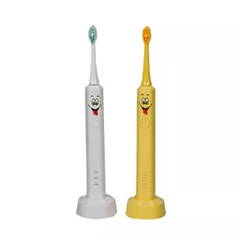The evolution of toothbrushes is a fascinating journey that spans thousands of years and reflects advancements in technology, materials, and oral hygiene practices. Here’s a brief overview of the key milestones in the evolution of toothbrushes:
- Early Tooth Cleaning Practices (Prehistoric Times – Ancient Civilizations): Long before the invention of toothbrushes, ancient civilizations used various methods to clean their teeth. Some cultures, like the ancient Egyptians and Greeks, used twigs with frayed ends to clean their teeth. These early “chewing sticks” served as primitive toothbrushes.
- Chewing Sticks and Miswak (Ancient to Medieval Times): Chewing sticks made from specific plants with natural fibers were commonly used in many cultures. The Miswak, a teeth-cleaning twig from the Salvadora persica tree, was used in the Middle East and parts of Asia for centuries. It was chewed on one end to create bristles for cleaning teeth.
- First Bristle Toothbrushes (15th – 17th Century): The first bristle toothbrushes resembling modern toothbrushes started to appear in China during the Ming Dynasty (1368-1644). These early brushes had hog bristles attached to bone or bamboo handles. They were introduced to Europe by traders and explorers and became more widespread.
- Mass Production and Modern Design (18th – 19th Century): The design of toothbrushes evolved in the 18th and 19th centuries. William Addis, an Englishman, is often credited with mass-producing the first modern toothbrush around 1780. He used bone handles and inserted boar bristles. Over time, the materials for handles shifted to more durable materials like ivory, bone, and wood, and bristles transitioned to nylon, which was introduced by DuPont in the 1930s.
- Nylon Bristles and Technological Advancements (20th Century): The invention of nylon by DuPont led to the development of synthetic bristles that were more effective and hygienic than natural bristles. This innovation marked a significant advancement in toothbrush technology. The introduction of plastic handles further improved durability and affordability.
- Electric and Powered Toothbrushes (20th Century – Present): Electric toothbrushes started to gain popularity in the mid-20th century. These brushes use electric power to provide more consistent and efficient brushing. They often come with features like timers and pressure sensors to encourage proper brushing techniques. More recently, advanced models with oscillating-rotating and sonic technologies have become available.
- Smart Toothbrushes (21st Century): With the rise of technology, smart toothbrushes emerged. These toothbrushes can connect to smartphones or other devices via Bluetooth and provide real-time feedback on brushing habits. They often come with apps that track brushing duration, coverage, and pressure exerted on teeth and gums.
- Environmental Considerations (21st Century): In recent years, there has been a growing awareness of environmental concerns related to plastic waste. This has led to the development of more sustainable toothbrush options, such as those made from bamboo handles and biodegradable materials.
The evolution of toothbrushes reflects both the advancement of oral care practices and the impact of technological and material innovations. From chewing sticks to smart toothbrushes, the journey showcases humanity’s ongoing efforts to maintain oral hygiene and improve overall dental health.








